Cómo tratar a un adulto que no responde
Peer reviewed by Dr Doug McKechnie, MRCGPLast updated by Dr Colin Tidy, MRCGPLast updated 31 Oct 2023
Satisface las necesidades del paciente directrices editoriales
- DescargarDescargar
- Compartir
- Idioma
- Debate
In this series:Breathlessness and difficulty breathingPulmonary embolismPulmonary fibrosisControlled breathing
This leaflet is created from first aid advice provided by St John Ambulance, the nation's leading first aid charity.
If someone becomes unresponsive they need someone to help keep them safe and prevent further harm. The type of help they need varies depending on why they have become unresponsive, whether they are breathing or not breathing and if they are baby, child or adult.
En este artículo:
This leaflet is designed to give a summary of general advice. This advice is no substitute for first aid training (see 'Further Reading' below to find out more about St John Ambulance and British Red Cross training courses).
Seguir leyendo
If someone is unresponsive and breathing
En qué fijarse
If someone is not responding to you and you think they are unresponsive, ask loudly: 'Are you alright?' or 'Open your eyes'. If they don't respond, pinch their earlobe or gently shake their shoulders. If they still don't respond, then you can presume they're unresponsive.
Lo que hay que hacer
Step 1 of 5: Open the airway
Place one hand on the person's forehead and gently tilt their head back. As you do this, the mouth will fall open slightly.
Place the fingertips of your other hand on the point of the person's chin and lift the chin.
Abrir las vías respiratorias
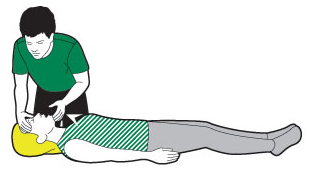
Step 2 of 5: Check breathing
Mire, escuche y sienta la respiración normal: movimiento del pecho, sonidos y respiraciones en la mejilla. Haga esto durante no más de diez segundos.
Compruebe la respiración
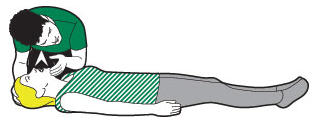
Step 3 of 5: Put them in the recovery position
This will keep their airway open.
Kneel down next to them on the floor.
The next three steps are for if you find the person lying on their back. If you find them lying on their side or their front you may not need all three.
Place their arm nearest you at a right angle to their body, with their palm facing upwards.
Cógele el otro brazo y colócaselo sobre el pecho de modo que el dorso de la mano esté contra la mejilla más cercana a ti, y mantenlo ahí. Con la otra mano, levanta la rodilla más alejada y tira de ella hasta que el pie quede apoyado en el suelo.
Now you're ready to roll them on to their side. Carefully pull on their bent knee and roll them towards you. Once you've done this, the top arm should be supporting the head and the bent leg should be on the floor to stop them from rolling over too far.
Posición de recuperación
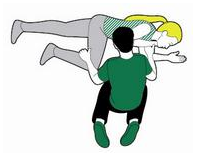
Step 4 of 5: If you suspect spinal injury
If you think the person could have a spinal injury, you must keep their neck as still as possible. Instead of tilting their neck, use the jaw thrust technique: place your hands on either side of their face and with your fingertips gently lift the jaw to open the airway, avoiding any movement of their neck.
Sospecha de lesión medular

Step 5 of 5: Call for help
Once you've put them safely into the recovery position, call 999 or 112 for medical help.
Until help arrives, keep checking the person's breathing.
If they stop breathing at any point, call 999 or 112 straightaway and get ready to give them CPR (cardiopulmonary resuscitation - a combination of chest pressure and rescue breaths).
If someone is unresponsive and not breathing
If an adult is unresponsive and not breathing, you'll need to do cardiopulmonary resuscitation (CPR).
CPR involves giving someone a combination of chest compressions and rescue breaths to keep their heart and circulation going to try to save their life. If they start breathing normally again, stop CPR and put them in the recovery position.
Lo que hay que hacer
If someone is with you, get them to call 999 or 112 for emergency help and ask them to get an automated external defibrillator (AED) if one is available.
How to perform CPR on an adult
Step 1: Giving chest compressions
Kneel down beside the person on the floor, level with their chest.
Place the heel of one hand towards the end of their breastbone, in the centre of their chest.
CPR finger position adult
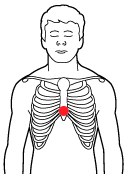
CPR adult

Place the heel of your other hand on top of the first hand and interlock your fingers, making sure you keep the fingers off the ribs.
Lean over the person, with your arms straight, pressing down vertically on the breastbone, and press the chest down by 5-6 cm (2-2½ in).
Release the pressure without removing your hands from their chest. Allow the chest to come back up fully - this is one compression.
Repeat 30 times, at a rate of about twice a second or the speed of the song 'Staying Alive'.
Give two rescue breaths.
Step 2: Giving rescue breaths
Ensure the person's airway is open.
Abrir las vías respiratorias

Pellízcales firmemente la nariz.
Pinch nose adult
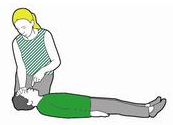
Respira hondo y cierra los labios alrededor de su boca.
Blow into the mouth until the chest rises.
Rescue breath adult

Retira la boca y deja caer el pecho.
Rescue breath pause adult

Repeat once more.
Carry on giving 30 chest compressions followed by two rescue breaths for as long as you can, or until help arrives.
If an automated external defibrillator (AED) arrives switch it on and follow the instructions provided with it.
If the person starts breathing normally again, stop CPR and put them in the recovery position.
Posición de recuperación

Recogida de pacientes para Primeros auxilios
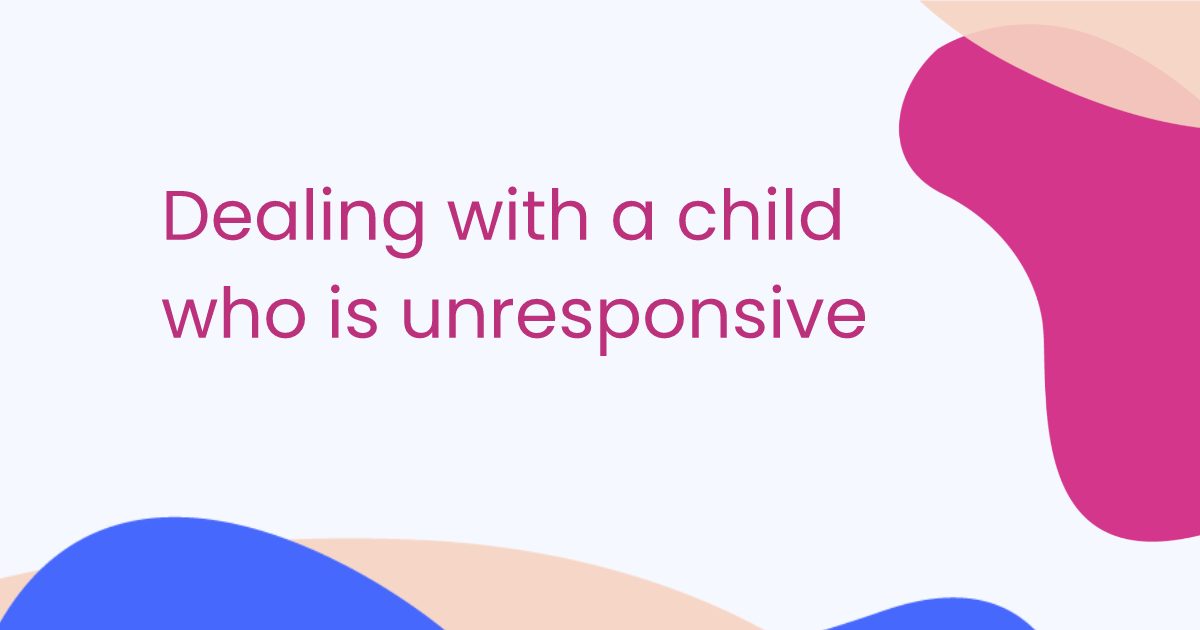
Tratamiento y medicación
Cómo tratar a un niño que no responde
Si una persona no reacciona, necesita que alguien le ayude a mantenerse a salvo y a evitar males mayores. El tipo de ayuda que necesitan varía en función de por qué no responden, de si respiran o no y de si son bebés, niños o adultos.
por la Dra. Philippa Vincent, MRCGP

Tratamiento y medicación
Recortes
Este folleto le orienta sobre lo que debe hacer tras un corte.
por el Dr. Doug McKechnie, MRCGP
Lecturas complementarias y referencias
- St John Ambulance Training Courses
- Red Cross Training Couress
- Unresponsive and not breathing - adults; St John Ambulance
- 2021 Directrices de soporte vital avanzado para adultos; Consejo de Reanimación del Reino Unido
Seguir leyendo
Historia del artículo
La información de esta página ha sido redactada y revisada por médicos cualificados.
Fecha prevista para la próxima revisión: 29 oct 2028
31 Oct 2023 | Última versión

Pregunte, comparta, conecte.
Explore debates, formule preguntas y comparta experiencias sobre cientos de temas de salud.

¿Se encuentra mal?
Evalúe sus síntomas en línea de forma gratuita
Sign up to the Patient newsletter
Your weekly dose of clear, trustworthy health advice - written to help you feel informed, confident and in control.
By subscribing you accept our Privacy Policy. You can unsubscribe at any time. We never sell your data.